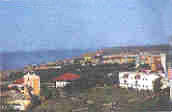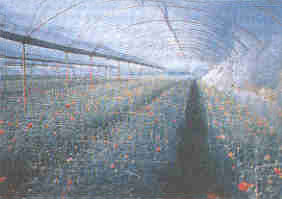The benefits of biodiversity are closely related to the economic values they represent and their impact on sustainable development. Species and their physiological processes, e.g. biomass production or biochemical processes, have always been considered on a material basis and as renewable capital for the primary production sector (e.g. agriculture, forestry or fisheries).
The benefits of biodiversity conservation can be categorised as follows:
I. BIOLOGICAL RESOURCES
II. ECOSYSTEM SERVICES
- Protection of water resources
- Soils formation and protection
- Nutrient storage and cycling
- Pollution breakdown and absorption
- Contribution to climate stability
- Maintenance of ecosystems
- Recovery from unpredictable events
III. SOCIAL BENEFITS
- Research, education and monitoring
- Recreation & tourism
- Cultural values
The three categories mentioned each can be related to economic impacts. These impact can be
- direct in the sense that they have direct economic value, like medicine, wood, tourism, or,
- indirect in the sense that the economic value follows from a better economic and often sustainable infrastructure, like research, education and protection measures.
Biodiversity conservation is one of the most important aspects of ICZM . Therefore, the benefits of ICZM given in the "Principles of ICZM" module under "Why ICZM?"-"Benefits" are applicable here.
|
Example: Sustainable tourism development and biodiversity conservation, Belek, Turkey

Belek is a coastal village of Serik district that is located 40 km away from Antalya City. Regional boundaries are Aksu Stream on the west, Acisu Stream on the east, the Mediterranean Sea on the south and the Tahtali Mountain on the north.
Main characteristics
- Belek region has been defined before 1990 as one of the most important sea turtle nesting sites along the Turkish Mediterranean coast.
- One of the most outstanding characteristics of Belek is a 29 km long coastline formed by a coastal dune. The wide sand dune areas and the beautiful forests with regional characteristic plants make the area very important in terms of biodiversity.
- There are 11 different systems such as the sea, sand dune, forest, pasture, marsh land, muddy plain, canal, agricultural area, residential area, vineyard and mountainous area in Belek which forms many different ecosystems.
- The area is a very attractive region both for local and international tourism. By the year 1995, 18 hotels were in service with a bed capacity of 15,000. The tourism development is continuing with the construction of new hotels and secondary houses.
- The nearby Serik Plain is well known for its agricultural fertility. Agriculture and greenhouses are extensive and developed in the region.

ICZM in Belek
Belek Tourism Investors Association, BETUYAB is a management association founded in 1988 by investing companies of the region with the support and leading skills of the Ministry of Tourism. Every company investing in the Belek Tourism Centre is obligated to be a member of BETUYAB. BETUYAB aims to establish sustainable tourism in Belek. BETUYAB's goals and activities are realized through cooperation between the investors, local inhabitants, official associations and establishments and relevant ministries. It is responsible for the infrastructure including the water supply, wastewater collection and treatment, communication, transportation, solid waste management and so on. These facilities are all required for tourism development. Various nature conservation projects, protocols and collective work have been done with NGOs and universities to investigate the ecological infrastructure and its regional diversity and to publish documents on biological diversity.
Lessons learnt
Organised and institutionalised integrated management is an adequate way to stimulate sustainable development in a coastal area. The Belek Tourism Investors Association are a good example of this in attempting to co-ordinate sustainable development, economical growth and biodiversity conservation amongst private companies, NGO's and Governmental organisations.
Further information
|
Example: Curonian Spit, Russia
The Curonian Spit is one of the largest accumulative landforms in the Baltic Sea. The site is on the World Heritage List as an international Russian/ Lithuanian cultural complex. Its geographical position and relief demonstrate the uniqueness and peculiarity of the Spit. The main terrain elements are comprised of dune complexes, which are among the highest in Europe (up to 68 m in height), stretching along the peninsula for over 70 km.
Due to its geographical position and north- east to south- west orientation, the Spit is a "directing line" for many migrating bird species. It connects migrating birds flying from northwestern Russia, Finland and the Eastern Baltic countries to Middle and Southern Europe. Every spring and fall 10 to 20 million migrating birds pass over the Curonian Spit and a considerable number stop to feed and rest there. Because migrating birds become so highly concentrated on the Spit it has turned into an important link in the chain of natural protected areas situated along the White Sea known as the Baltic flyway. Among the migrating bird populations are many rare and endangered species listed in the Red Books of Russia, Europe and worldwide.
The Curonian Spit landscapes were not purely a result of natural processes, but also due to human activity, and are an example of harmonious interaction between nature and human beings. The tribe of Kursiai, who inhabited the Curonian Spit for a many years have now disappeared but their ethnographic heritage is still visible. The landscape of a fishing village buried under sand dunes in the 18th - 19th centuries can still be found here. The Spit is rich in cultural heritage items. Protective engineering structures unique in their size are very important from a history, science and art point of view. Fishing settlements, archaeological sites and religious architectural structures are perfectly integrated into the landscape. The Curonian Spit is a wonderful natural phenomenon, hardly comparable in its beauty and scenery to any other area in the Baltic region. The diverse and strongly differentiating dune relief of the Curonian Spit combined with the green of the forests, bright whiteness of sandy beaches and unlimited stretches of the Baltic Sea, all represent important aesthetic values.
|

